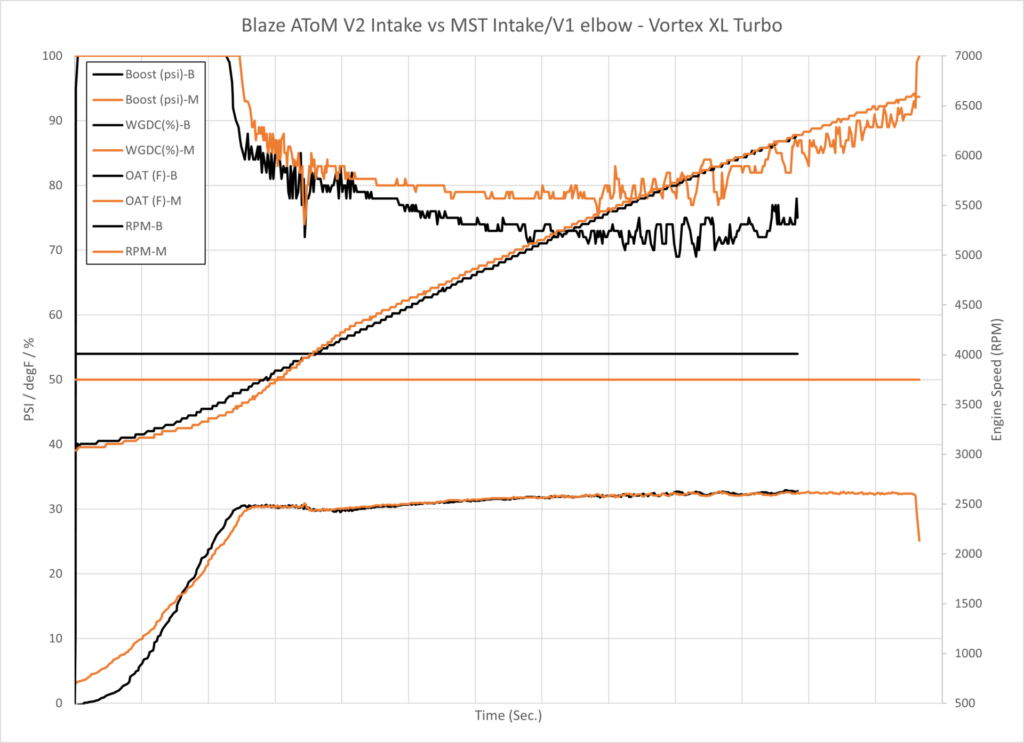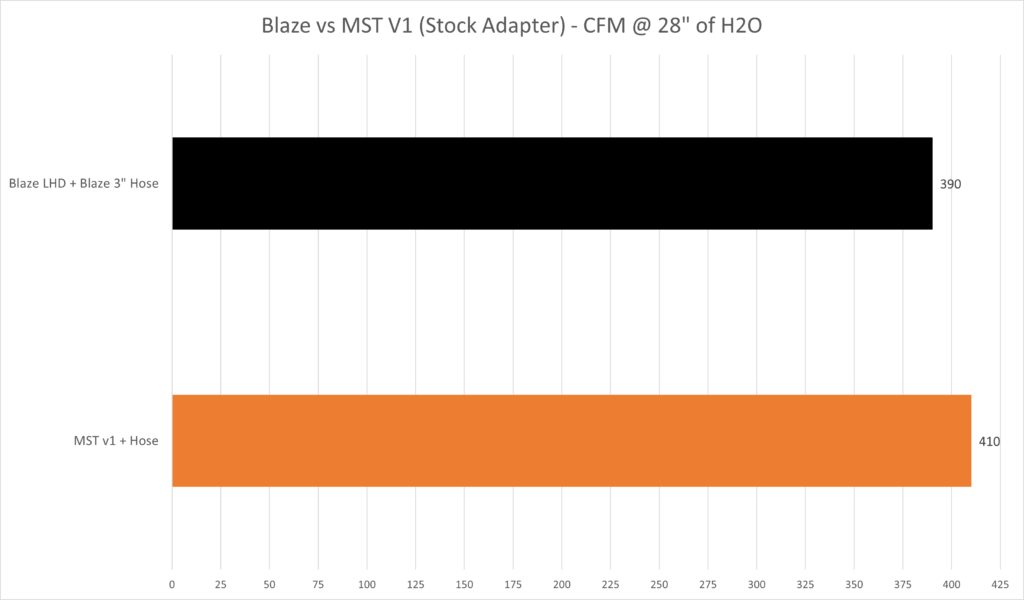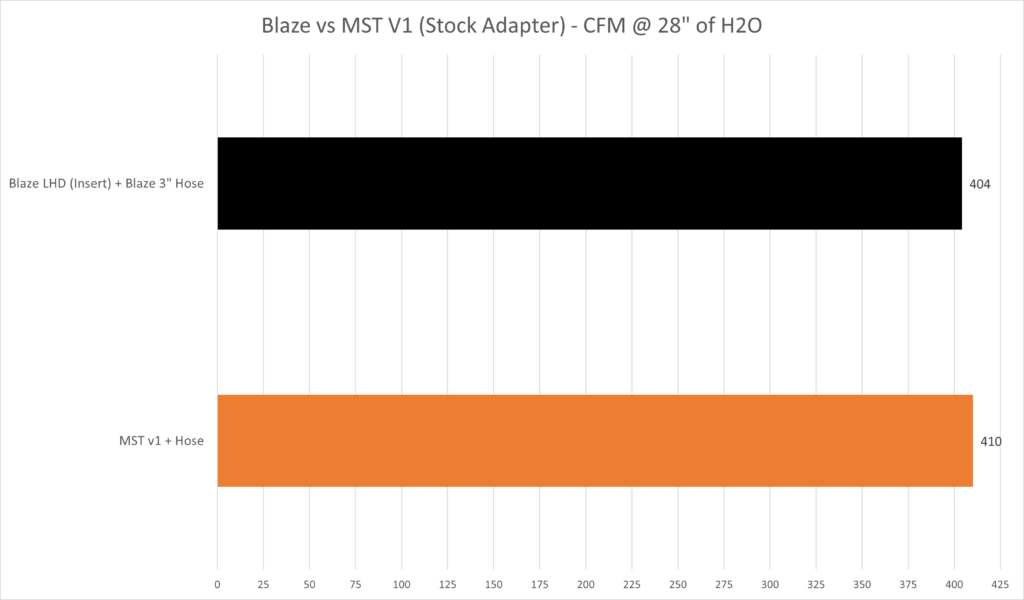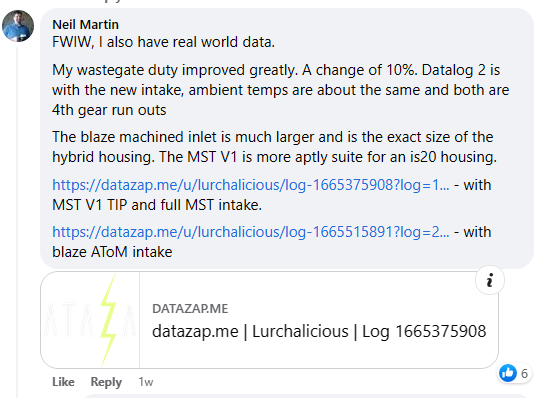Background:
Two prior posts related to the Blaze intake “real world” data (vs R600 and vs IE) addressed information that was presented to me for comparison to measurements I obtained.
This post will look at some additional “real world” data from a person who swapped between MST and Blaze intakes (see references). In this post, I will compare the vehicle data with measurements from individual component tests to see how well they correlate; “real world” compared to “bench test”.
Products:
The data from the vehicle is generated using a Hybrid turbocharger (56 mm compressor inlet ID).
Initially, the vehicle is operated using an MST Performance intake with an MST V1 turbo inlet pipe/elbow (TIP) (48 mm ID).
The MST intake is then replaced with a Blaze Performance AToM V2 intake/inlet flange (55.7 mm ID).
Note: According to MST Performance the MST V1 turbo inlet elbow is intended for use with stock-size turbochargers (IS20/IS38). Installing a turbo inlet elbow intended for use with a stock-size turbocharger on a hybrid turbocharger is expected to show decreased performance compared to using an inlet elbow designed for use with a hybrid turbocharger.



Data:
Data recorded from the car during a single-gear pull is shown on the chart. Orange lines are with the MST intake and black lines with the Blaze intake:

Most notable is a decrease in the wastegate duty cycle going from the MST intake and V1 TIP to the Blaze intake.
Bench flow test results using the MST V1 TIP (48 mm ID) and Blaze turbo flange (55.7 mm ID) are shown below:

Airflow is approximately 10% greater for the Blaze hose and inlet flange.
Interestingly the change in WGDC on the vehicle is also approximately 10%. I have no reason to believe this is anything but a coincidence.
Conclusion:
Data recorded with a vehicle shows a decrease in the turbocharger wastegate duty cycle following a change from the MST intake and MST V1 inlet elbow to the AToM V2 intake.
Bench flow measurements show the Blaze inlet flange allows more airflow through a hybrid-size adapter compared to the MST V1 turbo inlet pipe.
Note:
It is not expected that a hybrid-size turbo inlet would result in similar improvements on a vehicle equipped with a stock-size turbocharger compressor inlet as shown by the slight advantage to the stock size TIP, during bench testing.

Blaze Performance offers an insert for the inlet flange that improves the performance with a stock-size compressor housing.

The takeaway here is that when trying to optimize airflow between parts, matching the diameter of the parts to each other is an important factor to consider.
References:
The information used for this comparison was obtained from the Datazap links in the post shown below:

